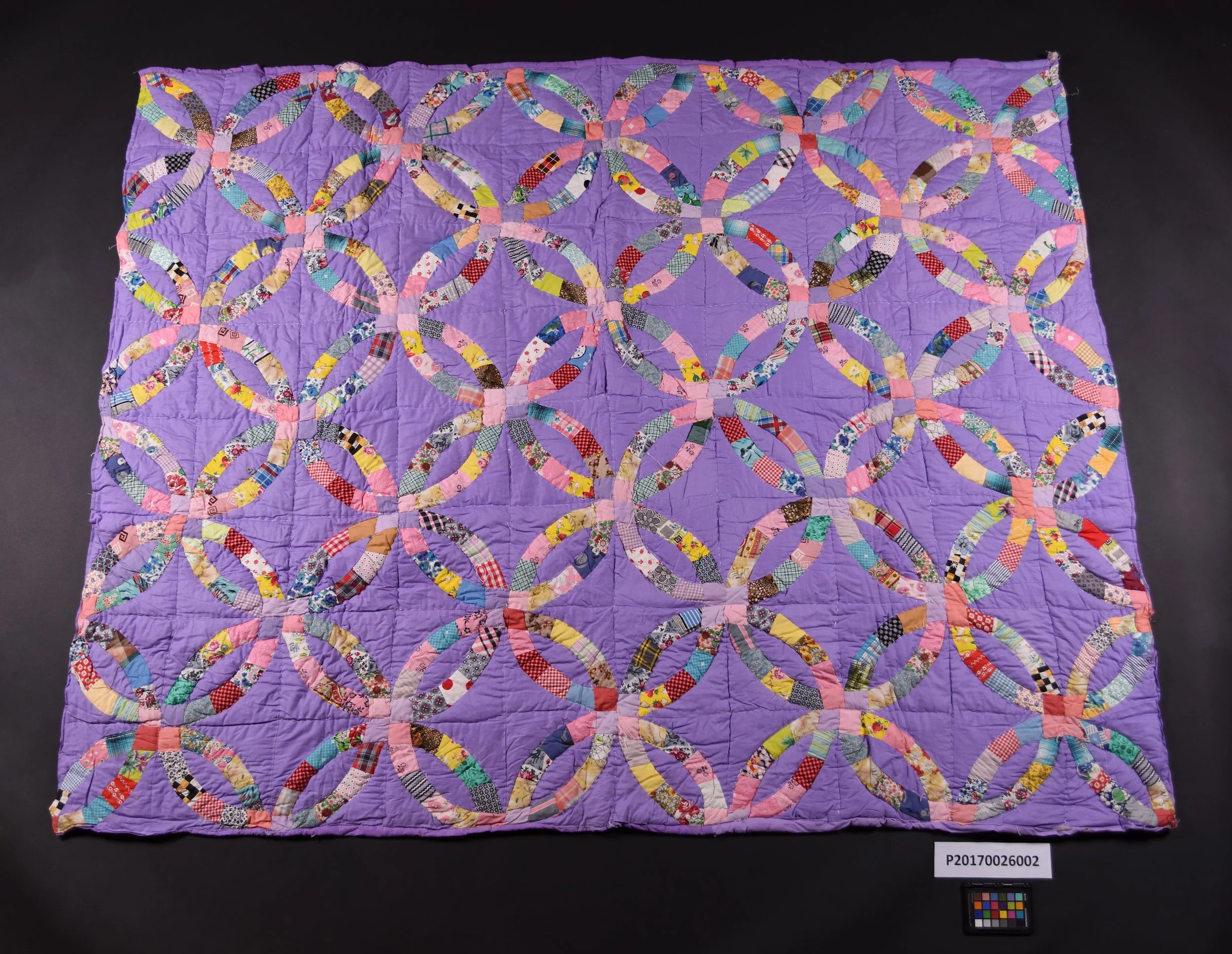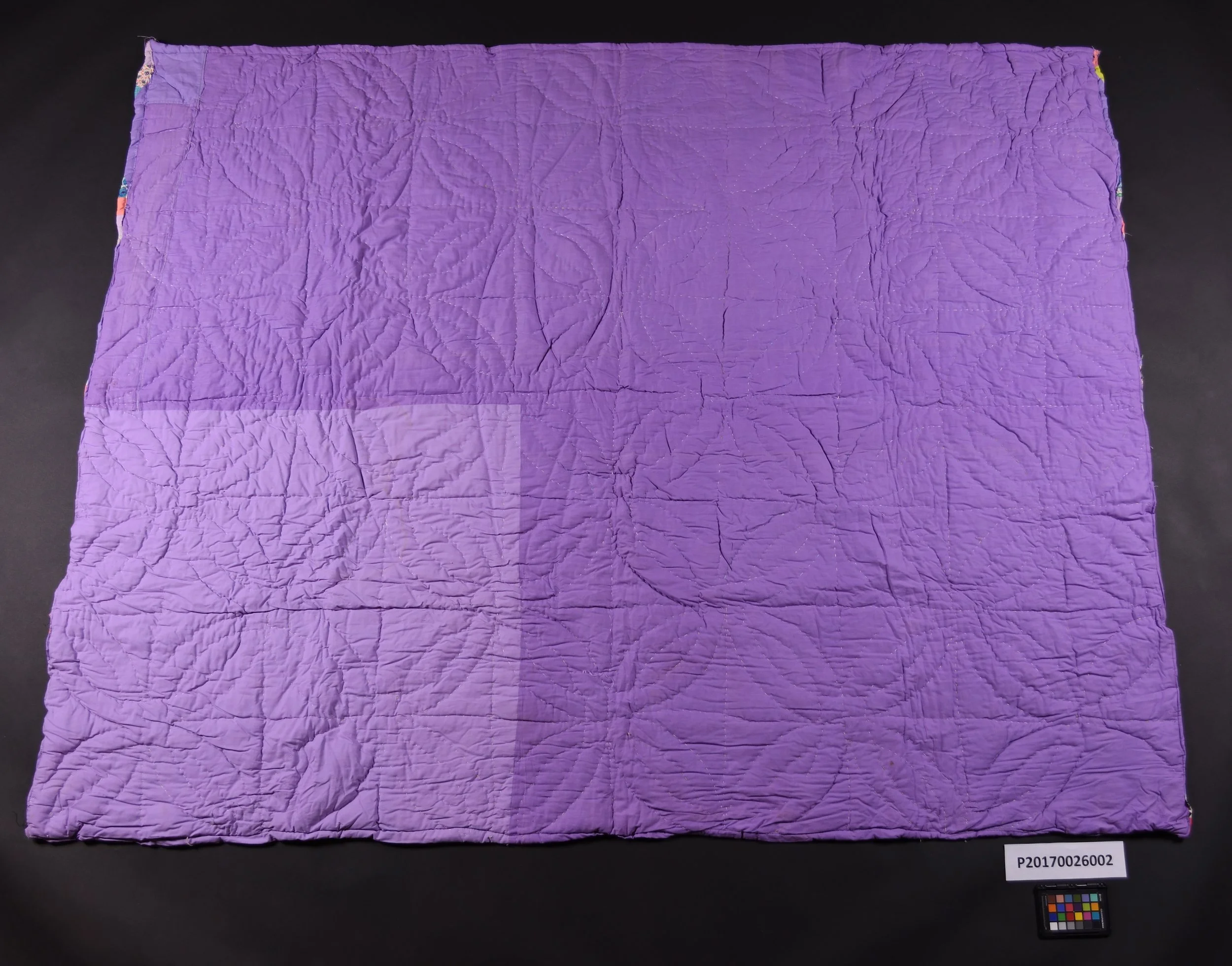A Busy Quilter
Purple Quilt with Double Wedding Ring Pattern - Front
Image courtesy the Galt Museum & Archives | Akaisamitohkanao’pa, P20170026002
We might all have that one family member who can magically repurpose old fabrics into warm quilts. Some assume that making a quilt is simple, but the process is quite lengthy. Quilters must plan out their design, pin cloth together, and sew through many layers of fabric.
The Galt Museum & Archives has a large collection of quilts. Within this collection are five quilts by Katherina Betts that were donated by her son Ed and daughter-in-law Gloria Betts. During an interview with them, the Galt was fortunate to learn about her story and quilting process.
Katherina Betts was a mother who had excellent sewing skills. She was one of the few women who sewed in her family. In 1930, Katherina voyaged to Nova Scotia from former Czechoslovakia in hopes of starting a new life in Canada. She planned to travel by the Canadian Pacific Railway to see her brother in Wetaskiwin, Alberta. But she ended up in Coutts, Alberta. Fortunately, the Ostby family housed her in exchange for her labour. She later met her husband, Clarence Betts, who invited her into his household, leading to their marriage in 1932.
Purple Quilt with Double Wedding Ring Pattern - Back
Image courtesy the Galt Museum & Archives | Akaisamitohkanao’pa, P20170026002
Back in the day, women were expected to take on traditional gender roles such as cooking, raising children, and becoming their family’s seamstress. It was within this societal expectation that Katherina acquired her sewing skills. She was always busy with her treadle sewing machine. She would use scrap cloth from her old clothes to create her quilts. During the Great Wars, many resources were scarce, leading women to collect and reuse materials such as cloth, paper, and flour sacks.
Katherina used old newspapers and catalogues to design her quilts. Instead of sending ten cents through the mail to get quilting patterns, she would plan and draw her pattern on the pages! She was known for frequently piercing paper and fabric together, and she likely used a technique called “piercing over paper.”
Her most recent quilt is a purple double wedding ring blanket. This quilt has a purple background on the front and back. On the top, there are multi-coloured interlocking rings. This quilt shows how she used both machine and hand-stitched techniques. The 80-squared grid and the edges of the quilts were all machine-sewn, while the multi-colour interlocking rings were stitched by hand. This quilt demonstrates the mastery of her quilting skills!
Katherina’s quilts give us insight into her quilting process and the traditional roles that women played in the past. For quilters seeking inspiration or curious minds, check out the Galt Museum’s collections and archives to learn more about Katherina’s quilts or any sewing-related objects at https://www.galtmuseum.com/research.


